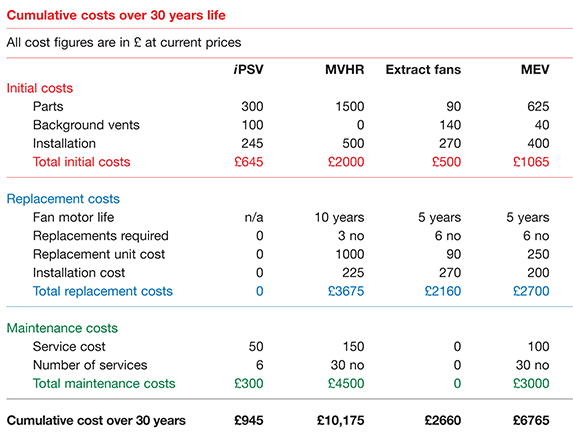Why is there a need for effective ventilation in social housing?
As we make homes more airtight and energy efficient, it is important to ensure adequate ventilation to promote a good level of indoor air quality, reducing the build-up of airborne pollutants and fungal spores. The air in habitable areas should be refreshed and the building allowed to ‘breathe’. To do this, the building needs inlets to introduce fresh air and extracts to exhaust the stale air.
What should specifiers look for in a system?
Systems should be simple to install, easy to maintain, straightforward to use and only run when required, thereby limiting energy loss. , A demand-controlled, self-regulating ventilator may be preferred to assist occupants with limited mobility. A fully automatic, silent ventilation solution can stop potentially damaging, occupant intervention.
There are a number of options, such as mechanical ventilation and heat recovery (MVHR), mechanical extract ventilation (MEV) and passive stack ventilation (PSV), however intelligent passive stack ventilation systems offer the optimal solution.
What is intelligent passive stack ventilation?
The Glidevale iPSV intelligent passive stack ventilation system is a whole-house, humidity sensitive, fully automatic solution. It provides a natural, no energy alternative to mechanical ventilation systems. The system can offer significant cost savings over the lifetime of the building when compared to alternative ventilation systems as shown in the table below. It is BBA certified and conforms to Building Regulations and Standards.
Unlike PSV where the inlets are always fully opened, the iPSV system includes window inlets, or through wall ventilators that respond to changes in relative humidity. Humidity sensitive receptors which use no power source to operate, open the units during higher humidity periods and close down to a “trickle” inlet as the humidity levels drop to normal. Acoustic versions are available for use in noise-sensitive areas.
For extract, the humidity-sensitive passive stack ventilation system provides 24 hour fully automatic, self-regulating ventilation. The unit opens when moisture vapour levels are high (typically after bathing or cooking) and close as the humidity levels fall.
What does the iPSV system comprise of?
With just four main elements, the system has been designed to be simple: background ventilation in the form of air inlets (trickle vent window or wall ventilators) to introduce fresh air; an air extract to remove humid and stale air; ducting and a roof terminal. To make specification easier, the system is supplied in kits with adaptable options to suit differing housing aesthetics and layouts.
How does Glidevale iPSV differ from MVHR / MEV systems?
iPSV is simple; it’s virtually a “fit and forget” solution. It has no electrical connections, making it straightforward and low cost to fit, with no specialist installation needed. With just one moving part, it requires minimal maintenance. It doesn’t need any occupant interaction so is less likely to be tampered with. It works silently 24 hours a day causing no disturbance.

How energy efficient and cost efficient is the system?
The iPSV’s automated design means that the system only runs when required, reducing energy loss. As it doesn’t need electricity to operate, there are no direct CO2 emissions as a result.
Research by De Montfort University has shown that using an intelligent passive stack system with humidity-sensitive air inlets can result in a lower overall energy consumption and carbon production compared to MVHR. [1]
Is technical help available?
Glidevale offers a bespoke technical design support service and provides a free site take off scheduling service and plot by plot delivery.
Glidevale has developed a white paper titled “Intelligent Natural Ventilation – A Low Energy Strategy”, available free of charge on the Glidevale website.
Laura Hughes is Senior Product Manager at Glidevale.
Article as seen in Housing Association Magazine.
[1] Thermal Modelling of Passive Stack Ventilation in Dwellings, The Institute of Energy and Sustainable Development, De Montfort University, 2010

